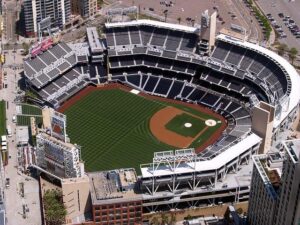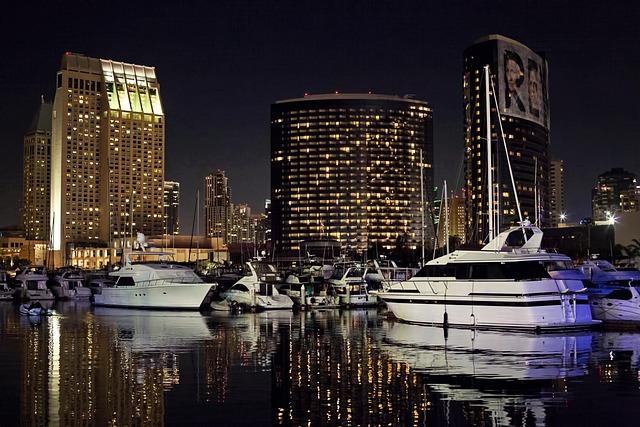San Diego’s stretch of Interstate 8 near the I-15 interchange has been officially designated as America’s riskiest road, according to a recent report highlighted by Axios. This perilous segment has drawn attention due to its high incidence of traffic accidents and safety concerns, raising questions about infrastructure, driver behavior, and necessary improvements to protect motorists in one of Southern California’s busiest corridors.
San Diego’s Interstate 8 Near I-15 Identified as Nation’s Most Hazardous Roadway
Safety concerns have escalated along the stretch of Interstate 8 near the I-15 interchange in San Diego, as recent studies highlight its designation as the most hazardous roadway in the United States. A combination of high traffic volume, frequent congestion, and complex merging patterns contribute to a disproportionately high number of accidents and near-misses. This corridor experiences a mix of commuter and freight traffic, creating intense pressure points especially during peak hours.
Analysts emphasize that the risk factors on this segment include:
- High frequency of rear-end collisions linked to stop-and-go conditions
- Limited shoulder areas reducing safe spaces for emergency stops
- Visibility challenges due to abrupt curves and elevation changes
- Inadequate signage causing driver confusion at critical junctions
| Key Statistic | Value |
|---|---|
| Annual Crash Count | 1,200+ |
| Fatalities (Last Year) | 18 |
| Injury Reports | 450+ |
| Average Daily Traffic | 90,000 vehicles |
Contributing Factors Behind the High Accident Rates on the I-8 Corridor
Several key elements converge to make the stretch of I-8 near I-15 in San Diego a hotspot for accidents. High traffic volumes combined with complex interchange designs contribute significantly to the risk. Drivers often face sudden lane changes and merges in a limited space, increasing the likelihood of collisions. Additionally, frequent congestion during peak hours results in stop-and-go traffic patterns that exacerbate rear-end crashes and side swipes.
Environmental and roadway factors also play a critical role. The corridor is prone to:
- Poor visibility conditions caused by fog and low lighting in certain sections
- Steep grade changes and sharp curves demanding heightened driver attention and skill
- Limited shoulder space, leaving little room for error or emergency maneuvers
| Factor | Impact on Accident Rates |
|---|---|
| Traffic Volume | High congestion leads to frequent stop-and-go crashes |
| Road Design | Complex interchanges cause confusion and risky lane changes |
| Visibility | Fog and poor lighting reduce reaction time |
Impact on Local Traffic and Commuter Safety Concerns in San Diego
The designation of the I-8 stretch near I-15 as the nation’s riskiest road has raised immediate concerns about its effects on local traffic flow and commuter safety in San Diego. The corridor, a vital artery connecting key districts, experiences daily congestion that often worsens due to sudden accident occurrences. Drivers face unpredictable delays that not only impact personal schedules but also the efficiency of public transportation and emergency services operating in the area.
In response, city officials are considering enhanced safety measures, including:
- Improved signage to alert drivers of hazardous zones.
- Increased patrols by highway safety officers during peak hours.
- Expanded lighting to enhance visibility at night and in fog conditions.
- Public awareness campaigns targeting distracted driving and speeding.
| Safety Issue | Daily Impact | Proposed Solution |
|---|---|---|
| Frequent rear-end collisions | Traffic backups up to 5 miles | Enhanced brake light timing systems |
| Limited visibility zones | Higher risk during dawn/dusk | Installation of LED roadway lighting |
| Distracted driving incidents | 30% increase in minor crashes | Targeted awareness and enforcement |
Expert Recommendations for Reducing Risks and Improving Road Safety Measures
Authorities and safety experts emphasize the critical need for targeted interventions on this high-risk corridor. Upgrading roadway infrastructure, including enhanced lighting and clearer lane markings, can substantially reduce driver confusion and collisions. Implementing smarter traffic management systems such as adaptive signaling and real-time congestion monitoring is also advised to improve traffic flow and minimize accidents during peak hours.
Key strategies recommended by road safety professionals include:
- Regular maintenance of road surfaces to prevent hazards caused by potholes and uneven pavement.
- Installing additional guardrails and crash barriers near curves and merging points.
- Increasing the presence of law enforcement to enforce speed limits and discourage distracted driving.
- Launching public awareness campaigns focused on safe driving behaviors tailored to the unique challenges of the I-8/I-15 interchange.
| Recommended Measure | Expected Impact | Implementation Timeline |
|---|---|---|
| LED Roadway Lighting | Improved night visibility | 6-12 months |
| Adaptive Traffic Signals | Reduced congestion and collisions | 12-18 months |
| Public Safety Campaigns | Increased driver awareness | Ongoing |
The Way Forward
As San Diego’s I-8 corridor near I-15 claims the title of America’s riskiest road, local authorities and transportation officials face mounting pressure to implement enhanced safety measures. With this recognition underscoring ongoing challenges, continued investment in infrastructure improvements and driver awareness campaigns will be critical to reducing accidents and safeguarding the thousands of motorists who traverse this stretch daily. The spotlight on this hazardous segment serves as a stark reminder of the importance of road safety in urban planning and transportation management nationwide.







